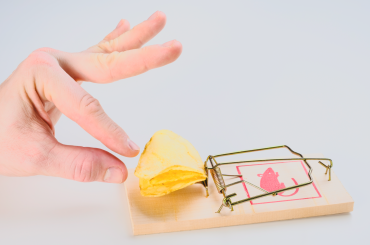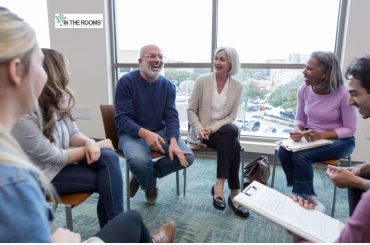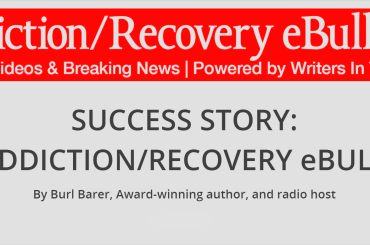When I had one year sober, I experienced something not unusual for me: I couldn’t stop crying. Mascara rivers down the face. That sort of wail that a passerby could confuse with maniacal laughing if they looked close enough. Wearing (ashamedly) wh
In early recovery, I felt my heart beating in a new way. And it was painful. Gory. Like a scene from Game of Thrones. Things I’d experienced in the past rose to the surface. All of the terrible feelings I buried for years in my active addiction started bubbling up like an oil spill in the ocean. It felt as difficult to manage as a coastal clean-up, too.
What I didn’t know at the time was that I was beginning the journey of learning how to feel – one of the most important things I’ve learned how to do in recovery.
Realizing When We Need to Feel
I recall slumping in my therapist’s office and sinking into the blue velvet upholstered chair. I stared towards the orchid plant by the window that stood so gracefully as it peered toward the light. Just being there felt like a release. Like I could finally breathe. I was early in recovery and there were things going on with me that I knew I needed to talk about. The tears fell like Smokey Mountain rain.
One afternoon, I told her about how I was feeling out of control. But this time it wasn’t my addiction that was unmanageable. It was how I was feeling. My emotions were a train off the track. I was terrified about where this train was headed.
My counselor looked at me and said something that I wasn’t expecting. She said that just like I was learning steps to address my addiction in community, I could do the same for the emotions I was feeling. It was okay if I was overwhelmed. In, fact, it was a good thing. Feelings can be overwhelming. The good news? Now, that I was sober, there was something that I could do about them. It was time to take action.
“The first step is learning how to identify them,” she said with a smile that annoyed me back then. “You can learn how to name your feelings.”
I learned that day in her office, that it wasn’t rocket science. It was simple. All I had to do was start by asking myself this simple question:
What am I feeling?
When That Feeling Feels Tough
It took a while, but I began to learn how to identify the rainbow of emotions I was feeling. It felt a little strange at first, and I felt a bit like a toddler learning to walk. But I jumped in. I figured it had to be easier than what I did when I was using: bury it all. Because the thing about burying emotions is that they always come back. Just like those zombies in the music video for Thriller.
The second step in the process, I learned, was sitting with them. Wrestling with them. Letting myself cry and scream and run and flail. Because what I had experienced as a child and as a teen and in active addiction as an adult was hard. It was sad. It was something that I could—and should—grieve. I needed to allow myself to feel all of it.
You’ve Got a Friend in Me
I also learned that this second step in feeling wasn’t something done in isolation. I could learn how to feel and share these feelings with other safe people. Just like recovery, I could heal these parts of myself in community, too.
After years of struggling in active addiction and then struggling in early recovery with feeling all the feels alone, I realized that if I didn’t have to get sober alone, there was no hard thing that I had to do alone again. I could reach out to my sober community and share. There was nothing that surprised them (or surprises them today). Most often, they’ve been there.
While our feelings are a solitary thing, they don’t have to stay locked away in our minds or hearts anymore. We can name what we are feeling. We can sit with those feelings. And we don’t have to sit with them alone.
If you are struggling today with feeling some tough things, there are a couple of things that you can do. Name it. Sit with it. Share it. Then, see what happens. In my experience, what follows is freedom.








1 Comment
It’s important to expand our emotional vocabulary, we often categorize our emotions simply and they are so complex.. Fear can be jealousy, fear can be guilt, shame, a million things.. it begins with emotional identification..